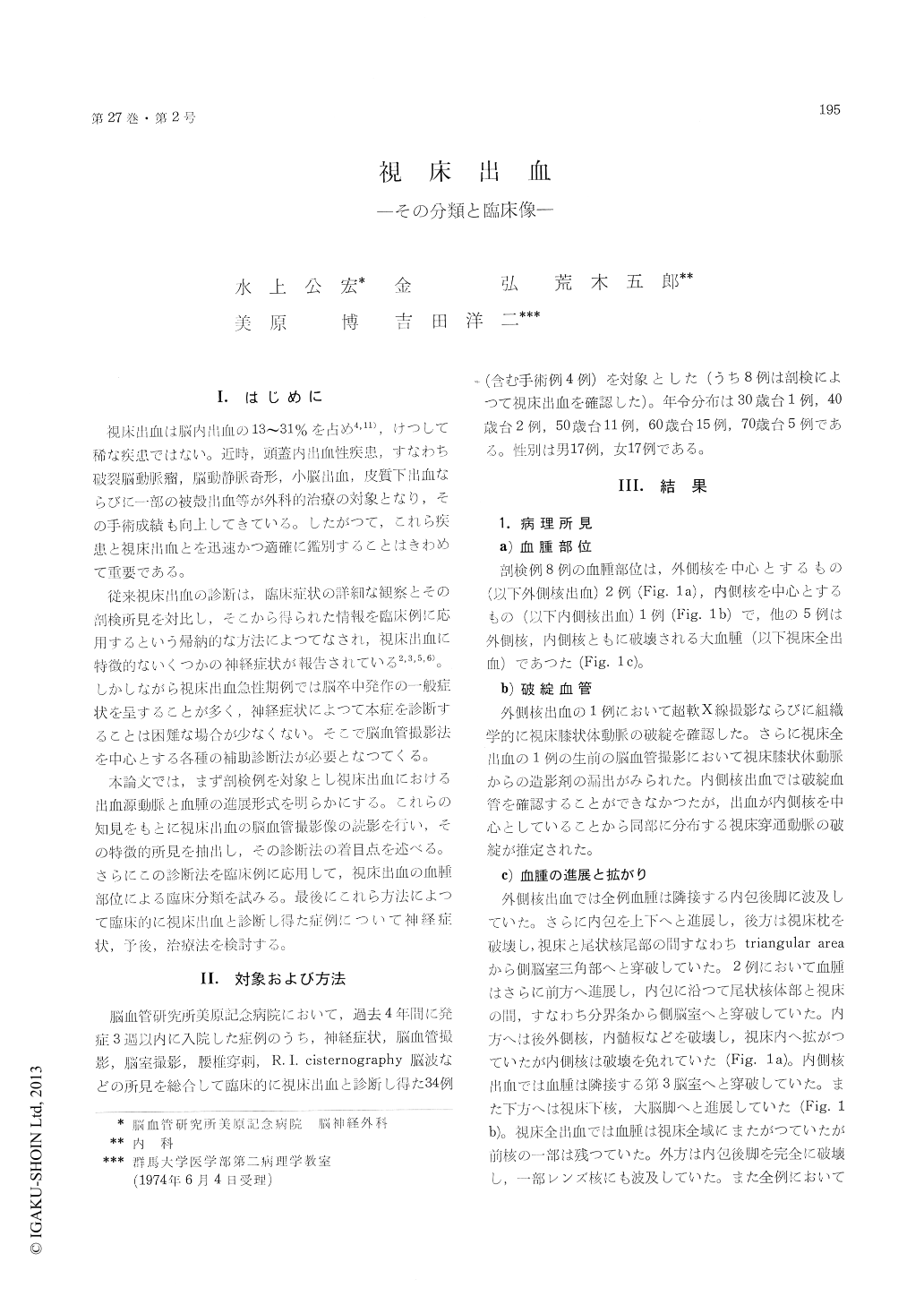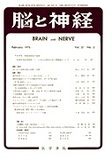Japanese
English
- 有料閲覧
- Abstract 文献概要
- 1ページ目 Look Inside
I.はじめに
視床出血は脳内出血の13〜31%を占め4,11),けつして稀な疾患ではない。近時,頭蓋内出血性疾患,すなわち破裂脳動脈瘤,脳動静脈奇形,小脳出血,皮質下出血ならびに一部の被殻出血等が外科的治療の対象となり,その手術成績も向上してきている。したがつて,これら疾患と視床出血とを迅速かつ適確に鑑別することはきわめて重要である。
従来視床出血の診断は,臨床症状の詳細な観察とその剖検所見を対比し,そこから得られた情報を臨床例に応用するという帰納的な方法によつてなされ,視床出血に特徴的ないくつかの神経症状が報告されている2,3,5,6)。しかしながら視床出血急性期例では脳卒中発作の一般症状を呈することが多く,神経症状によつて本症を診断することは困難な場合が少なくない。そこで脳血管撮影法を中心とする各種の補助診断法が必要となつてくる。
34 cases with thalamic hemorrhage (8 autopsy cases and 26 clinical cases) were studied from patho-logical and angiographical standpoint, and the following conclusions were obtained.
1. The thalamic hemorrhage can be pathologically classified into 3 types:
1) Hemorrhage arising from the rupture of thamlamogeniculate artery mainly distributed in lateral nucleus. 2) Hemorrhage arising from the rupture of thalamoperforate artery mainly distri-buted in medial nucleus. 3) Hemorrhage covering the whole thalamus due to advancement of either of above hemorrhages or combining of the both.
2. Each type of the thalamic hemorrhage has characteristic findings on carotid angiogram, so can be classified also by angiography. The criteria of diagnosis were determined by elucidating the ad-vancing form of the hematoma pathologically in each type.
3. According to our diagnostic criteria, hemor-rhage in lateral nucleus is 19, hemorrhage in medial nucleus is 3 and whole thalamic hemorrhage is 12 respectively.
4. Among neurological symptoms ophthalmicsymptoms were most reliable in comatose or semi-comatose patients. These ophthalmic symptoms were myotic pupils, loss of light reflex and down-ward or wrong side deviation of eye balls as Fisher repored. However these symptoms could not be observed in patients with mild disturbance of consciousness.
5. Classical thalamic syndroms were very few and two or three symptoms of them were observed in patients with hemorrhage in lateral nucleus. So it is very difficult to diagnose as thalamic hemor-rhage in patients without severe disturbance of consciousness by neurological symptoms alone.
6. Overall mortality was 26% and the severer the disturbance of consciousness the higher the mortality was.
7. This angiographical classification of the thala-mic hemorrhage has an important meaning for the choice of the treatment and the judgement of prognosis of the thalamic hemorrhage in acute stage.
8. Ventricular drainage was the effective treat-ment for the patients with the angiographic find-ings of the internal hydrocephalus.

Copyright © 1975, Igaku-Shoin Ltd. All rights reserved.


